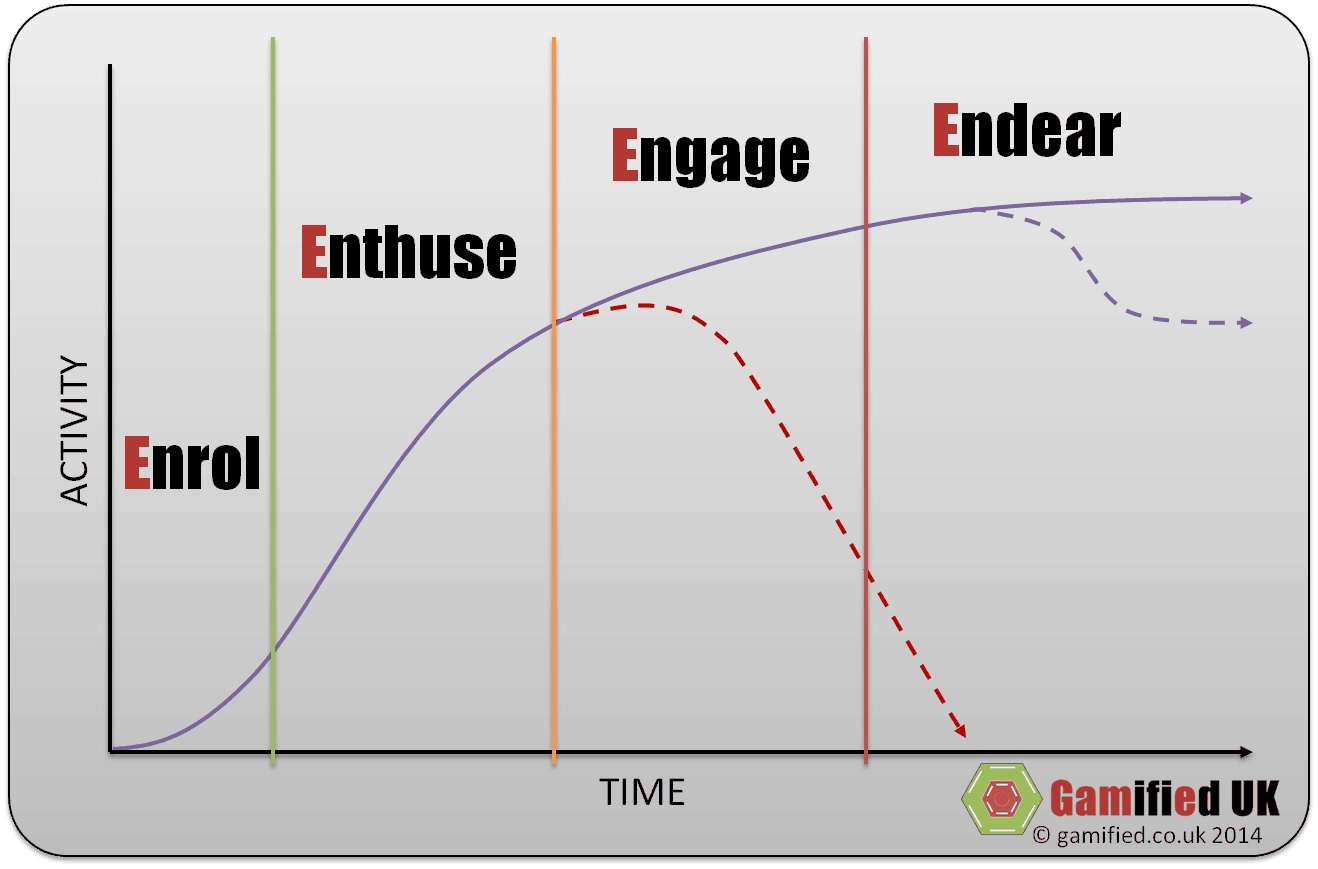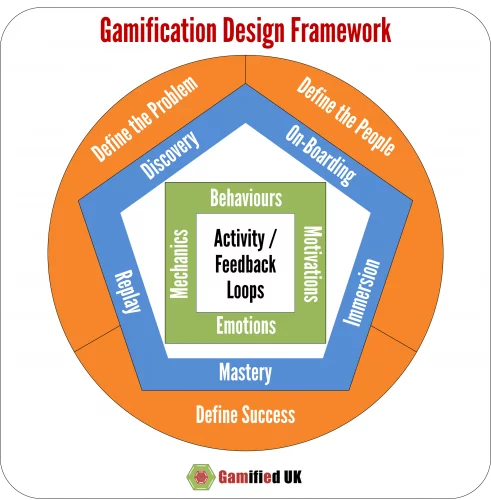As ever, I look at all my work and try to evolve it over time. This time it is the turn of the EEEE User Journey framework. There is nothing wrong with it in concept, I just feel that I want to add to it!
If you will remember it consisted of four phases. Enrol, Enthuse, Engage and End Game / Endear.
Now, I have started to view it slightly differently! It’s my prerogative ok! So now we start with Discover (yes I know the likes of Yu Kai and Amy Jo have done this), followed by On-Board, Immerse, Master and finally Replay
Yes DOIMR is less catchy that EEEE but it is better for a couple of reasons!
Discover
There has to be a discovery phase, like the attract screen in the arcades, because without it – how will people start to use the system? It may just be an email to tell you to do some mandatory training, it may be subtle posters that hint at something new. However you decide to do it, it is essential and has to fit with the overall theme of the programme.
On-Board
Nothing new here, this is the scaffolding of the whole show. If you get this wrong, people will not get any further in their journey! It has the potential to be a massive drop off phase of the journey. You have to balance it just right, to hold the user’s hand enough to keep them going, but not so much they feel babied and foolish. Measured use of rewards can be of great benefit in this stage as digital “pats on the back”.
Immerse
Once they are in the system and know what they are doing, they can immerse themselves in the activities – be it learning, day to day sales entry or any other activity. This is where good activity and feedback loops are essential to keep people engaged. It is also the stage of the journey where you will need to stop relying on rewards and start helping the users find their intrinsic reason to be there.
Master
This is the phase where a couple of things may happen. This may be the point where the journey ends, the user has finished and has met the end-game requirements, game over man… However, it may also be the start of the next phase of the journey, a bit like the Black belt in martial arts. You have mastered the first journey, now you must move on to the second and third etc. Achievers aim for this level and will work hard to get it. Make sure they feel rewarded for their efforts (and I don’t mean points and badges!!!)
Which leads us to….
Replay
If there is no specific moment where the journey ends, you need to include replayability. This can come in several forms. It could be an opportunity for the ones who have completed, to try and ace it. Think about casual games where you can finish a level with 1, 2 or 3 stars. The replay value comes from trying to get through levels you didn’t score 3 on again, trying to attain the maximum. It may be that they get to play again at a high difficulty – remember the Nightmare mode from Doom? It may be that they can play again with a different role. In the case of a learning related system, they could go back with the role of master, rather than apprentice, acting as a guide and mentor to those who are yet to master the earlier phases. You can really leverage the Philanthropist User Types here.
Here is the expected picture – I am looking at making a nicer one though!

Similar Posts:
- Introduction to Gamification Part 6: The User Journey
- The EEEE User Journey Framework
- A Revised Gamification Design Framework



Also published on Medium.


Thanks ANDRZEJ MARCZEWSKI informative .
help me out
how to handle different types of Game players (killers,achievers,socialites&explorers) in a more productive way for a while?